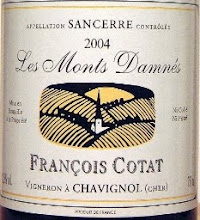
Comté has its own AOP, Appelation d'Orgine Controllée, and the production area is spread over 3 departments: Jura, Doubs and l'Ain. 2 breeds of cows are permitted for the milk: Montbéliarde (95% of the cattle) or Simmental française (5%) and only fresh grass is allowed as food. The fruitière is the place where all the farmers bring and gather the milk. Close to 160 fruitières are spread out over the 3 departments. The comté is then made, all year long, based on a traditional process.

The mimolette is basically Edam cheese (Dutch) but is using a coloring powder to give it its famous orange color. The other name for mimolette is Boule de Lille as it is assumed that Lille was an important production area. Now Normandy is also producing a lot of mimolette. The holes of the cheese are made thanks to small mites who are introduced in the ageing cellars. Those mites are also responsible for the complexity of the mimolette and are brushed off the cheese when done. Unlike the comté, mimolette is best around 2 years old as it loses its flavors if aged longer.

Lastly, my favorite or close, the Vacherin of Haut-Doubs: le Mont d'or. Just like the comté, Mont D'or has its own AOP. It has been named after the highest mountain of the Doubs and was already on Louis XV table. During fall, the cows are returning to the cowshed after spending the summer outside in the mountain. As the milk production was lower, this was not enough to make comté so the farmers got the idea of producing a small cheese who was named at the time (and still now): fromage "de boîte" after the wooden box holding the Mont d'Or. The cheese is seasonal and is available only a few months (around Christmas) and made with raw milk from the same cows used for comté. You will need close to 7 liters of milk to make 1Kg of cheese.
The affinage usually lasts 21 days, minimum, on spruce planks and then placed in one spruce ring, slightly smaller than the cheese itself, giving its wrinkled rind.
In order to get ready for those cheeses, we started with a beautiful blanc de blancs Jacques Lassaigne, Les Vignes de Montgueux. Usually a pinot noir terroir, the chardonnay here benefits from the chalky soil. Very low sulfur, expressive nose, white chocolate and pear. Plenty of chalk as well. This Champagne is rich but with elegance thanks to the acidity and minerality. Pure with a long finish, discreet leesiness. Very good.
On to the cheeses. I tried to pair the different cheeses with a few wines. I though the aged mimolette would work with an old claret and the aged comte and gruyere would do well with some white Jura which would also cut though the creaminess of the Mont d'Or.

First to go was the 1986 Laurel Glen cabernet from Sonoma with the mimolette. Pairing was ok, not the best ever but not the worst either. I said that on the'91 but have to say it again: I wish more Cali cabs were done this way. Really gorgeous nose with earthy and smoky notes along cassis and violets. Riper and a little bigger than the '91 and not showing the bell pepper notes, this is a nice expression a cabernet from Sonoma. Palate confirms the nose with some cedar notes with again a lot of cassis and interesting sour cherry on the finish. Balanced. Tannins are a little rustic but based on this bottle, this wine has more years in him.

The 2 Jura wines, the 2003 La Mailloche from Stephane Tissot and a 2002 Puffeney Arbois Savagnin were simply outstanding.
The 2003 La Mailloche did not show any over ripeness or flabbiness. The clayish soils and eastern aspect helped to manage better the 2003 heat and the wine was beautifully balanced. Nutty with some green apple and a touch of honey and smoke. Floral. An apparent minerality links everything together. The palate is an example of balance, coating your palate with no lack of acidity and no sign of heaviness. Tasting this blind would take you on a top Meursault. Intoxicating, complex and stunning.
This Puffeney Savagnin was fantastic. Iodine and a lot of spicy curry notes on the nose. Light walnut as well. I was expecting a more oxidised style but this is mildly oxidised. Wine is flowing on your palate, superb acidity with more lemony notes on a medium body. Awesome comté rind notes as well.Long finish. Complex and fresh.
Those whites Jura were clearly a very good pairing with the pungent flavors of the cheese. Thanks to their complexity and lenght, they were abble to stand out to the cheese and play with it all the way.


No comments:
Post a Comment